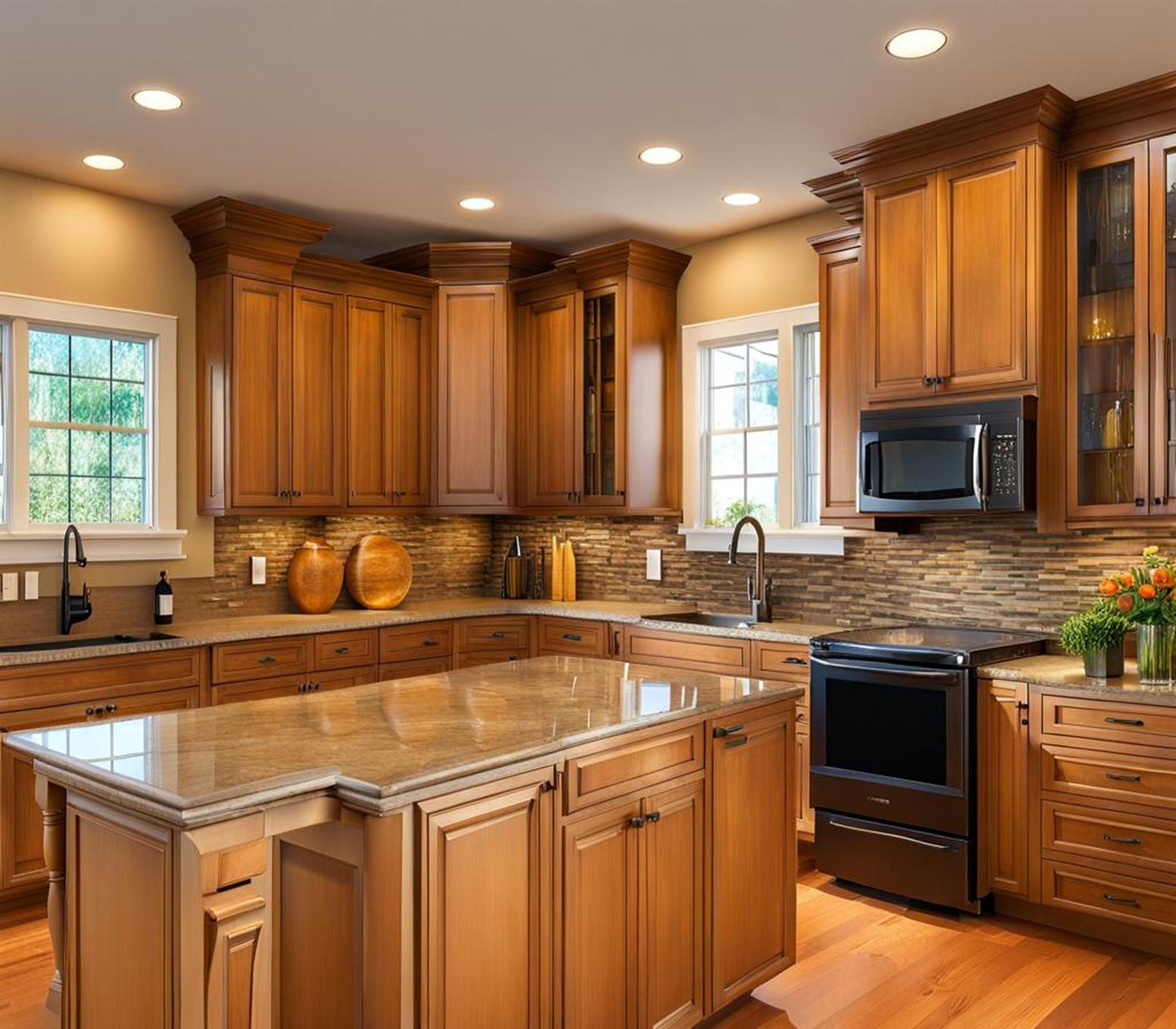Replacing your kitchen cabinets can transform the look and feel of your home’s heart. But before diving into a remodel, it’s important to understand what impacts the cost of new cabinets. With prices ranging from a few thousand dollars for stock cabinets to over $40,000 for fully customized options, cabinetry represents a significant portion of your kitchen remodel budget.
By learning what factors drive pricing, you can set realistic expectations and budget wisely. With some smart planning and prioritization, you can balance your dream kitchen with affordability.
Cabinet Types and How They Impact Cost
One of the biggest influences on price is the type of cabinets you choose. From ready-to-assemble stock cabinets to highly customized versions, the level of personalization greatly impacts budgets.
Stock Cabinets
Stock cabinets offer a cost-effective option featuring standard sizes and a limited range of materials and finishes. As the most budget-friendly choice, stock cabinetry runs between $100-$300 per linear foot installed.
While stock cabinets won’t have all the bells and whistles, they provide an affordable way to check off the key elements of your kitchen vision.

Semi-Custom Cabinets
A step up from stock, semi-custom cabinets add a bit more flexibility. You’ll have more choices for finishes, door styles, and storage solutions. These mid-range cabinets range from $150-$650 per linear foot installed.
Semi-custom offers a nice compromise if you want some customization without breaking the bank. You can inject more personality than stock cabinets provide.
Custom Cabinets
For maximum design freedom, custom cabinets start from scratch based on your precise layout and style preferences. From exotic imported woods to innovative storage built-ins, the sky’s the limit.
This high level of personalization comes at a price – custom cabinetry runs $400-$1,200+ per linear foot installed. The investment pays off if you want a truly one-of-a-kind kitchen.
Popular Cabinet Materials and Pricing
Along with customization, the type of material used for cabinet boxes and fronts impacts cost. From solid hardwoods to thermofoil, material choice affects both aesthetics and pricing.
Wood Cabinets
Timeless and sought-after, wood remains the most popular material for cabinetry. Oak, maple, walnut, and hickory are some of the many wood species to consider. Expect to pay more for exotic and rare choices.
The grade, finish, and construction quality also affect wood cabinet pricing. In general, expect to pay $500-$1,000 per linear foot for high-end solid wood cabinets installed.
Thermofoil Cabinets
Made by adhering colored thermoplastic film to medium-density fiberboard, thermofoil cabinets offer an economical alternative to solid wood. The durable laminated finish resists scratches, stains, and moisture damage.
Starting around $300 per linear foot installed, thermofoil cabinets provide affordable style and ease of cleaning.
Laminate Cabinets
Similarly, laminate cabinets apply a plastic-coated printed paper to a composite wood substrate. Laminate allows a wide range of colors and patterns to suit any decor. Pricing is comparable to thermofoil, in the $250-$500 per linear foot installed range.
Estimating Based on Kitchen Size
To estimate your total spend, start by multiplying your kitchen’s linear footage by your desired price per linear foot. This will give you the cabinet cost for the perimeter.
For example, a 10′ x 10′ kitchen has 40 linear feet. At $300 per linear foot for stock cabinets, the total would be $12,000. For a larger 15′ x 15′ kitchen at $500 per foot for custom wood cabinets, the total cost estimate would be $30,000.
Factoring in Cabinet Installation
While DIY installation may seem like a cost savings, it’s often better left to the professionals. Their expertise ensures your new cabinets are leveled, plumb, and anchored securely.
Expect to add at least 10-20% to your total cabinet costs for professional installation services. This safeguards your investment and provides peace of mind.
Extra Costs to Keep in Mind
Beyond the cabinetry itself, remember to factor in expenses like:
- Knobs, pulls, and other hardware
- Drawer organizers and other functional add-ons
- Glass doors, lighting, and specialty storage solutions
- Delivery fees
- Local sales tax
While optional, these final touches do add up. So be sure to leave room in your budget.
Setting a Smart Cabinet Budget
As a general rule, allot 30-40% of your total kitchen remodel budget for new cabinets. But you can adjust this percentage based on your priorities.
If your dream design hinges on exotic custom cabinetry, it may be worth increasing the budget share for cabinetry. Just be ready to scale back in other areas like countertops or appliances.
If aesthetics aren’t as important, you can lower costs by choosing stock or thermofoil cabinets. Putting savings toward a high-end stove or standout backsplash may be a better balance.
Professional Guidance Pays Off
Navigating the many factors influencing kitchen cabinet costs can feel overwhelming. Don’t go it alone. Consult with experienced kitchen designers and contractors.
An expert can help you explore cabinet materials and customization options to strike that perfect balance of design and affordability. They’ll also ensure your new layout is configured to maximize workflow and storage.
Investing in professional guidance upfront provides peace of mind that your kitchen and budget are in good hands.
Kitchen cabinet costs vary based on the size of your space, level of customization, materials, installation, and features. While prices can range dramatically, planning carefully helps keep your project budget on track. Focus on necessities rather than extravagances, and don’t underestimate the value of professional support. With reasonable expectations set, you can look forward to a kitchen that delivers on function, style, and affordability.
